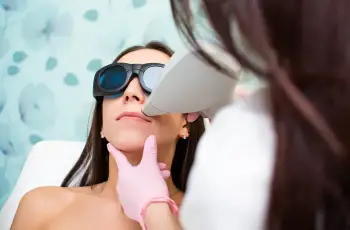
Can Azelaic Acid and Glycolic Acid be Used Together?
The popularity of acids in recent years has led to every skincare brand using them in at least one of their popular products. The only downside is that these acids are extremely potent and come in active concentrations in a wide variety of formulas. This is great for getting impressive and visible results, but there are also dangers with overuse. Yes, you can have too much, and if these powerful skin heroes are applied in multiple layers or used incorrectly, they can weaken the skin barrier, irritate the skin, severely dry it out, and cause redness.
Before we get started, let’s quickly summarize what exactly azelaic acid and glycolic acid do for the skin.
What are the benefits of azelaic acid?
Derived from grains like barley, wheat, and rye, azelaic acid isn’t actually in the AHA family, but a class of drugs called dicarboxylic acids. It’s often used to treat problem areas like rosacea and acne because it reduces swelling and redness on the skin. It also fights any bacteria on the surface of the skin that can cause clogged pores and, as a result, rashes, leaving your skin clear.
What are the benefits of glycolic acid?
One of the most popular and commonly used of the AHAs, glycolic acid is derived from sugar cane and works on the outer surface of the skin. When used, it removes dead skin cells that normally reside on the outer surface, causing a host of issues, from more noticeable fine lines to frequent rashes to a dull complexion.
Now that you have a better understanding of how these ingredients work, let’s take a closer look at whether or not you can use azelaic acid and glycolic acid together.
Can glycolic and azelaic acid be used together?
Yes, it is considered completely safe to use both azelaic and glycolic acids together. It is a simple change to incorporate both acids into your daily routine, but it can have a huge impact on your skin.
Many medical and skin care experts believe this is because azelaic acid is well tolerated by almost all skin types, including mildly sensitive skin. However, it is difficult to find azelaic acid in over-the-counter formulas, which makes this skin care ingredient very unique in its own way. It is gentle enough for sensitive people, but not strong enough to continue to be used as a prescription ingredient.
It is important to remember that both acids exfoliate the skin, which is why it is important to wear sunscreen every day, yes, even on cloudy days.
What not to mix with azelaic acid?
Azelaic acid is considered a skincare ingredient that can be easily incorporated into your daily routine and combined effectively with other acids. However, this does not mean that there are some ingredients that should be avoided. For example, if you are mixing azelaic acid with salicylic acid, it is recommended that you consult with a doctor or dermatologist to ensure that your skin can tolerate the combination. This will prevent skin irritation, dryness, and signs of a damaged protective barrier due to over-irritation of the skin.
Can glycolic acid be used with other acids?
Yes, you can, but be careful as it is easy for your skin to over-exfoliate without you really noticing. Glycolic acid is one of the most effective AHAs and can certainly be a great addition to your daily skincare routine as long as your skin can tolerate it. With other acids, such as lactic and malic acid, you will need to alternate the formula or timing of using glycolic acid with the other acids.
Many people with combination or oily skin find that the combination of salicylic and glycolic acid can lead to clear, radiant skin. However, this is not the case for everyone, so it is important to patch test any new ingredient or product 24 hours before using it on your face to avoid any adverse skin reactions.
What products should not be used with glycolic acid?
Mixing Vitamin C with Glycolic Acid should be avoided. You’ll find that Vitamin C is often considered unstable and difficult to mix with other ingredients. This is often the result of outdated research that described Vitamin C as an extremely unstable skin ingredient, making it highly reactive. This is because glycolic acid and Vitamin C have low pH levels, which means they are both acidic and can easily create an imbalance on the surface of the skin. This imbalance can lead to skin irritation and other issues, such as dryness and redness on the surface of the skin.
If you want to learn more about the uses of Vitamin C, read our dedicated blog post on what not to mix with Vitamin C.
Can I use Azelaic Acid every day?
Yes, you can use Azelaic Acid every day, in fact, you can use it twice a day in your daily skincare routine. It often appears in a variety of different skincare products, allowing you to tailor your routine to your skin and the issues you want to address. What I mean by this is that if you have more sensitive skin, you can opt for a face wash since it rinses right off the skin. If you have combination or oily skin, you can opt for a stronger product, such as a serum. Can I use Glycolic Acid every day? You actually can! Just like Azelaic Acid, you can use it twice a day. If you want my advice, I would go for an exfoliating toner with glycolic acid. This is because the toner’s formula allows the skin to be exfoliated without the ingredients sitting on the skin too long to cause irritation. Here’s more information on using azelaic acid and glycolic acid together. If you have any questions, don’t forget to follow us on Instagram.


